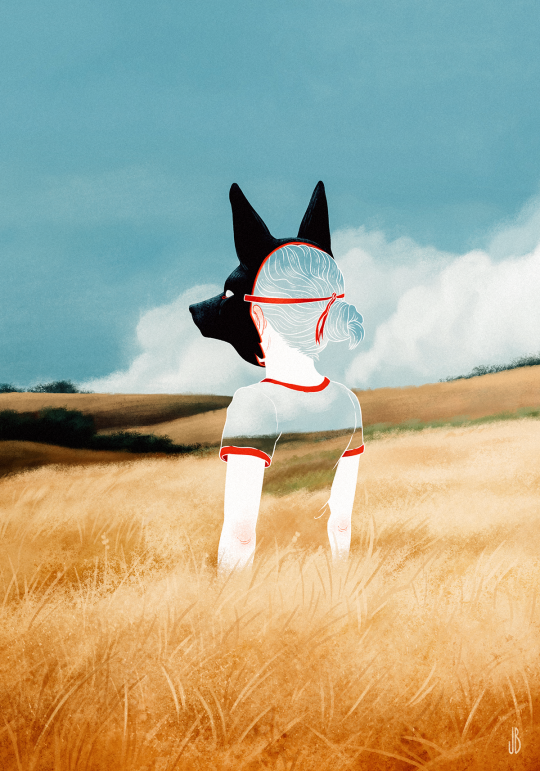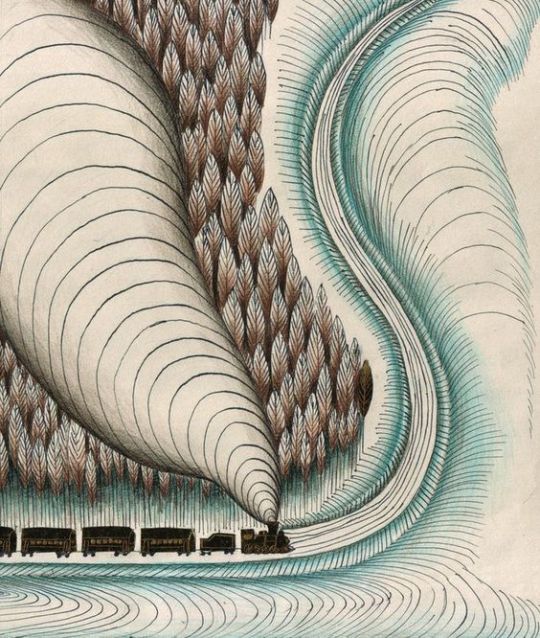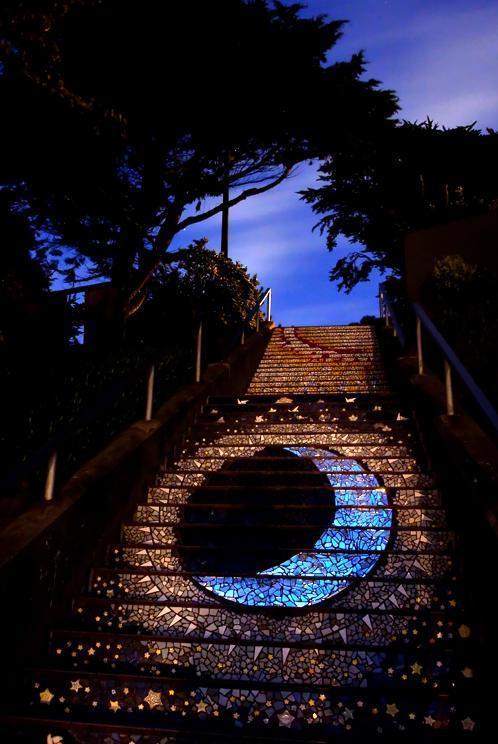The name is Katie living here in Texas just enjoying my life. Snippets of my thoughts, art, and random things I enjoy.
Don't wanna be here? Send us removal request.
Photo




If you don’t share with Cheeks, you can’t have it at all.
11K notes
·
View notes
Text
name one native american intellectual off the top of your head, name one native american actor or actress off the top of your head, name one native american senator, one native american news anchor, or an author or a tv personality or a singer or a poet or a comedian, name a single native american teacher you’ve had, can you? probably not
ok so now think of one native american cartoon character you know of or a sports team relating to native americans whether it’s their actual name or their team logo, or a town you live in or near with a “native” name bet a lot of these things came to you right away i bet you didn’t even have to think
needing native representation in media, education and government are not decoy issues, the commercialization and appropriation of native cultures are not decoy issues, the lack of native representation is institutional oppression at work
337K notes
·
View notes
Text
I just wanna cover my feelings up with tattoos
106K notes
·
View notes
Text
i just have this persistent feeling of “i’m not doing enough” combined with “i don’t have the energy to do anything” and it just really fucking sucks
977K notes
·
View notes
Photo

You felt alive here–fearful and wild and beautiful.
65K notes
·
View notes
Text
So I used to be a martial artist
I started going to the dojo when I was in sixth grade. It was a very masculine environment; there weren’t a lot of other girls there but the male senseis who ran the place were great guys and they genuinely loved having female students because we were such a rarity.
Now back in sixth grade I was tinier even than what I am now, and now I’m only 5’2. Then I was probably even under 5’0. I mean I was a squirt of a kid. But I loved to fight; I loved to be in the ring, I loved the adrenaline rush and I loved having punches hurled at me. It was fun for me. Our dojo did full-contact sparring, which was pretty brutal. These were the only rules:
you must wear a mouth guard and gloves
no hits below the belt
That’s pretty much it.
Anyway every Thursday was Fight Night, where all we did was spar each other. And on my First Night Sensei Diven—who has since passed, bless his soul—paired me up with this really cocky and assholish brown belt to show me the ropes a little. This brown belt kid was bigger than me by a lot; he must have been at least six feet and twice my weight. But man was I excited to get into the ring! I had a fight boiling in my blood.
Now, Sensei Diven was not a stupid man and he hated high-ranking kids that showed a bad attitude. This kid had a bad attitude. So he must have seen the evil gleam in my eye from a mile away and decided it was time for a little improvisation.
Anyway, Sensei yelled, “Start!” and I leapt into fight stance and the other kid didn’t even put his hands up. He was laughing at me, sneering, the whole nine yards. “I’ll give you a free one.” he joked, and he slapped his side. “You barely weigh 100 pounds and you’re a girl. So go ahead, little girl. Hit me.”
And I hit him. I cocked my leg up as high as it would go and roundhouse kicked him right in the ribs with all of my might and all of the contempt I felt for his stupid cocky face which was covered in ugly-ass freckles and his nasty-ass braces. And I heard a crack. Like a real snap! sound. And the kid has a look of surprise on his face like it was nobody’s business, and then he goes right to the floor like a sack of potatoes.
Now, Sensei Diven leisurely strolls over from the group of black belts who are laughing their asses off at me, the tiny little white belt, sending my Goliath to the floor. I mean they’re laughing so hard they look like they’re about to pee themselves. They think it’s a game. And in his great booming voice he hollers:
“Brown Belt! Why are you on the floor? Do you not see this white belt has been assigned to fight you?”
And meanwhile he is just crying. I broke one of his ribs.
And Sensei Diven just squats down next to this poor kid and whispers, “Don’t you know that women are made of pain?”
343K notes
·
View notes
Photo

himalayan pink salt, dried grapefruit rind, dried mint. I crush it all up w good ass intent and take it to the shower with me. throw in a dollop of coconut oil and it is the ideal scrub for starting anew + it has the MOST uplifting natural scent, TRUST!! 🙏🏼🍊☀️✨🌈🍃
9K notes
·
View notes
Photo

Martín Ramírez (January 30, 1895 – February 17, 1963) was a self-taught artist who spent most of his adult life institutionalized in California mental hospitals, diagnosed as a catatonic schizophrenic. He is considered to be one of the 20th century’s self-taught masters.
2K notes
·
View notes
Text
love is real and worth it and SO important to me it’s pretty much my entire political spiritual philosophical deal………you can be critical of how romantic love is commodified and dominated by heteronormative myths for sure but ppl out there like “love is fake” aren’t doing ANYTHING interesting or subversive……love is revolutionary bc the systems that oppress us are directly opposed to all kinds of love, interpersonal love and self love etc. they’re trying to drive it out of us. love as an action love as a choice love as something u cultivate and tend to is the best thing in the world and it’s at the absolute centre of my life
110K notes
·
View notes
Video
instagram
To all of my california friends who can’t miss fireflies because they haven’t ever seen them.
343K notes
·
View notes
Photo

You’ve come a lot farther than you often think. You’re doing so great! :))
58K notes
·
View notes
Text
Herbology Fridays: Anatomy of Plants
From MC Production, we bring to you Herbology Fridays! Let the lessons Commence!
——-

This lesson will be all about the anatomy of plants, namely flowers and herbs that will be used in the craft or for people who are studying medical uses of plants. As these lessons continue, I will be going over different herbs and their uses. But for now, let’s begin with the basics of herbology: Anatomy.
Learning the anatomy of a plant can greatly help any witch who likes to harvest their own plants for their craft! It can also be helpful to know in order to determine if a seller is actually selling you the right item/plant piece.
Let’s start with the end. The Root.
The Root:

The root is the portion of a plant that is typically found in the ground. There are different portions of the root. Here are some different types of roots and parts:
Fibrous: Composed of many spreading branches (EX. Barley Root)
Conical: Tapers from the Crown of the plant (EX Carrots)
Fusiform: Goes both up and down (EX Raddish)
Napiform: Swollen at the base, broader rather than longer (EX Turnip)
Fasciculated: Fibers or branches are thickened
Tuberiferous: Branches assume the shape of rounded knobs (EX Potato)
Palmate: When a knobbed root branches off
Aerial: emitted from the stem and into open air (EX Indian Corn)
Rhizome/Root Stock: prostrate stem on the surface (EX Blood-root, Calamus)
Tuber: Enlargement of subterranean branch (EX Artichoke, Potato)
Cormus: Fleshy subterranean of a round or oval figure (EX Indian Turnip)
Bulb: Abbreviated stem clothed with scales (EX Lilly)
And that's pretty much it as for the roots. Next, we shall travel to the stem.
The Stem:

The stem is the portion of a plant which grows in the opposite direction of the roots. Most plants will have a stem. Some plants will seem like they don’t have a stem, but it may just be short or hidden in the ground. Here are some plants that have different types of stems and parts:
Herbs: the stem does not become woody over time, but dies down after flowering
Shrubs: a woody plant near the ground; can range from 1ft to 6ft high
Trees: greater height than that of a shrub; stem unbranched from the ground. The stem of a tree is called a trunk.
Grass: too weak to stand up without support
Stolon: a form of a branch that curves towards the ground, where it may hit the root.
Sucker: rises out of the ground and forms a stem that soon becomes an independent plant
Runner: slender branch sent off from the base of the parent stem
Offset: similar to the runner, but shorter with a tuft of leaves at the end
Spine: short and imperfectly developed branch of a woody plant
Tendril: slender leafless branch capable of coiling
The Leaf:

The leaf is a flattened structure of a plant, typically bladelike, and is attached to a stem directly or via a stalk. Here are some different types leaves and parts:
Petiole: the stalk that joins a leaf to a stem
Lamina: a broad expanded blade attached to the plant stem by a stalklike petiole
Sessile: attached directly to its base without a stalk or peduncle; fixed in one place; immobile.
Simple: blade consists of a single piece
Compound: blade is composed of two or three more with a branched petiole
Venation: the arrangement of veins in a leaf
Lanceolate: shaped like the head of a lance; of a narrow oval shape tapering to a point at each end; leaf
Ovate: having an oval outline or ovoid shape, like an egg, leaf
Cuneiform: wedge-shaped leaf
Cordate: heart-shaped leaf
Sagittate: shaped like an arrowhead; leaf
Peltate: shield-shaped; more or less circular, with the stalk attached at a point on the underside
Serrate: having a jagged edge; sawlike
Dentate: having a toothlike or serrated edge
Crenate: having a round-toothed or scalloped edge
Sinuate: having a wavy or sinuous margin; with alternate rounded notches and lobes
Pinnate: having leaflets arranged on either side of the stem, typically in pairs opposite each other.
Pectinate: having very close or narrow divisions(sections) like a comb
Lyrate: having or suggesting the shape of a lyre
Runcinate: pinnately cut with the lobes pointing downward
Palmate: having several lobes (typically 5–7) whose midribs all radiate from one point
Pedate: is a structure that resembles feet, or has a quality of feet
Obovate: ovate with the narrower end at the base
The Flower:

The flower is the seed-bearing part of a plant, consisting of reproductive organs inside the petals. Here are the parts of the flower, there are many forms and types of flowers therefore not going to be explained:
Leaves/Envelopes(perianth): a flattened structure of a higher plant, typically green and bladelike, that is attached to a stem
Calyx(sepals): a whorl that encloses the petals and forms a protective layer around a flower in bud.
Corolla(petals): the petals of a flower, forming a whorl within the sepals and enclosing the reproductive organs.
Stamens: the male fertilizing organ of a flower; consisting of a pollen-containing anther and a filament.
Filament: the slender part of a stamen that supports the anther
Anther: the part of a stamen that contains the pollen
Pollen: a fine powdery substance from the male part of a flower. Each grain contains a male gamete that can fertilize the female ovule
Summit: top, apex; especially: the highest point
Pistil: the female organs of a flower, comprising the stigma, style, and ovary
Ovary: the hollow base of the carpel of a flower, containing one or more ovules
Stigma: the part of a pistil that receives the pollen during pollination
Torus/Receptacle: an enlarged area at the apex of a stem that bears the organs of a flower or the florets of a flower head.
Monoecious: having both the male and female reproductive organs in the same individual; hermaphrodite
Dioecious: having the male and female reproductive organs in separate individuals.
Polygamous: bearing some flowers with stamens only, some with pistils only, and some with both, on the same or different plants.
The Fruit:

The fruit is typically the seed-bearing part of a plant. Here are some of the parts of the fruit:
Follicle: a dry fruit that is derived from a single carpel and opens on one side only to release its seeds
Legume/Pod: the long seedpod of a leguminous plant
Drupe: a fleshy fruit with thin skin and a central stone containing the seed
Achenium: any small, dry, indehiscent fruit, as the strawberry, with one seed which is attached to the ovary wall at only one point
Cremocarp: dry dehiscent fruit characteristic of plants that consists of two indehiscent one-seeded mericarps which split apart at maturity and remain pendent from the summit of the carpophore
Caryopsis: a dry one-seeded fruit in which the ovary wall is united with the seed coat
Nut: a fruit consisting of a hard or tough shell around an edible kernel
Samara: a winged nut or achene containing one seed
Berry: any fruit that has its seeds enclosed in a fleshy pulp
Pome: a fruit consisting of a fleshy enlarged receptacle and a tough central core containing the seeds
Pepo: fleshy, watery fruit with numerous seeds and a firm rind
Capsule: dry fruit that releases its seeds by bursting open when ripe
Silique: the long, narrow seedpod splitting open when mature
Cone: the cone of a pine, fir, or other conifers
The Seed:

a flowering or fruit-bearing plant’s unit of reproduction, capable of developing into another such plant.
And we (Finally) finished the anatomy of plants! I hope this helped a lot of you out in the long run of your herbalist life in herbology. Please join me when I go over the Medical terms that will probably be heard throughout the rest of my lessons following.
Sincerely,
The Sleepy Witch
3K notes
·
View notes
Text
🌿Healing salts🌿
Salt is very purifying, cleansing, and healing, combine it with some various healing plants and you’ve got amazing healing salts for baths, cooking, aromatherapy, and spells. It’s also a great way to preserve your herbs!
🌿 Here’s what you need:
-Salt (regular sea salt is fine but Himalayan or Celtic salt correspond more with healing in my opinion)
-fresh healing herbs/plants of your choice (can be dried but I’ve had better results with fresh)
-mortor and pestle
-somewhere to store it
🌿Here’s some recommended healing herbs/plants:
Basil- protection, prosperity, happiness // anti-inflammatory, anti-nausea, appetite stimulator
thyme- healing, sleep, soothing // soothes respitory system, antiseptic, decongestant
peppermint- energy, health, vitality // nausea &vomiting, IBS, bloating
garlic- protection, banishment, healing // anti-bacterial, anti-viral, reduces infection
lemon peel- cleansing, purifying, joy // antioxidants, immune boost, kills germs
sage- protection, cleansing, wisdom // cough, antibacterial, soothes inflammation
oregano- luck, health, family // anti-virus, allergy relief, anti-inflammatory
orange peel- optimism, happiness, strength // immune boost, vitamins, antioxidants
lemon balm- healing, psychic abilities, uplifting // anti-anxiety, sleep, indigestion
parsley- calming, protection, passion // energy, circulation, digestion
rosemary- cleansing, divination, love// soothes sore muscles, soothes cough, improves memory
cinnamon- comfort, love, protection // anti-bacterial, anti-inflammatory, kills germs
🌿How to make it:
-Add a small handful of salt and the herb or herbs of your choice in your mortor and pestle (how much you use depends on the size of your mortor and pestle and how strong you want the salts to be)
-Grind them up until they’re mixed well and infused, the salt will most likely change color.(it’s easier to tell with fresh plants, with dried plants it’ll be more of a powder when it’s done). I like to use this time to focus on the intent!
-Pour it into an airtight container and you’re done, enjoy in a bath, in food, in spells, scrubs etc.
** please do research before consuming any herbs or plants you aren’t familiar with, especially if you’re pregnant or on medication.
6K notes
·
View notes



